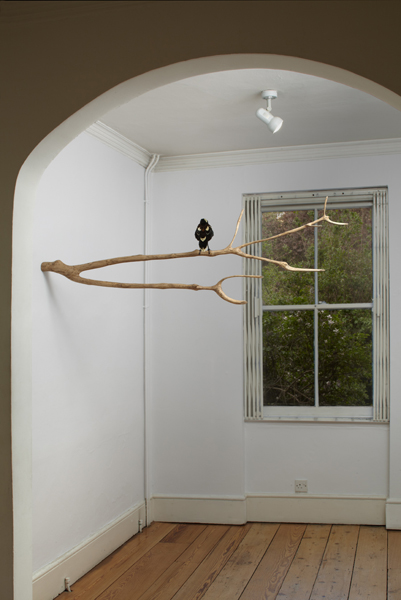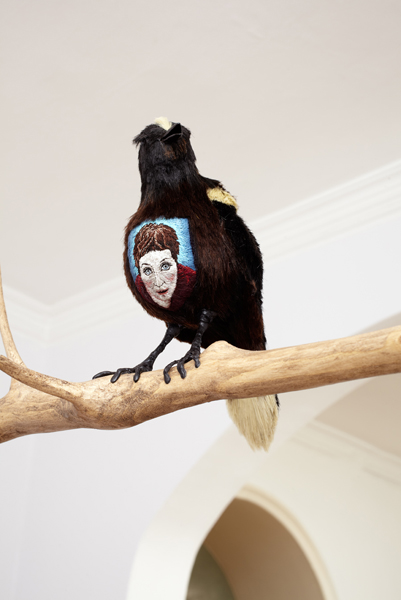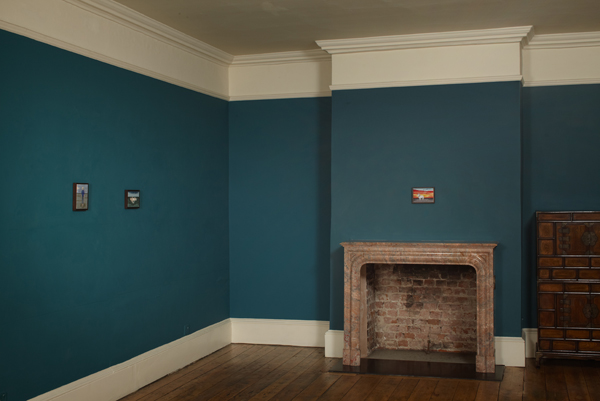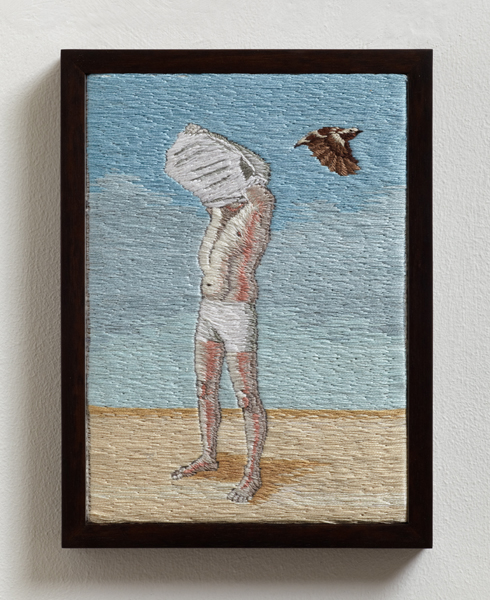|
Annie Whiles Beggars Belief |
|||||||||||||||||||||||
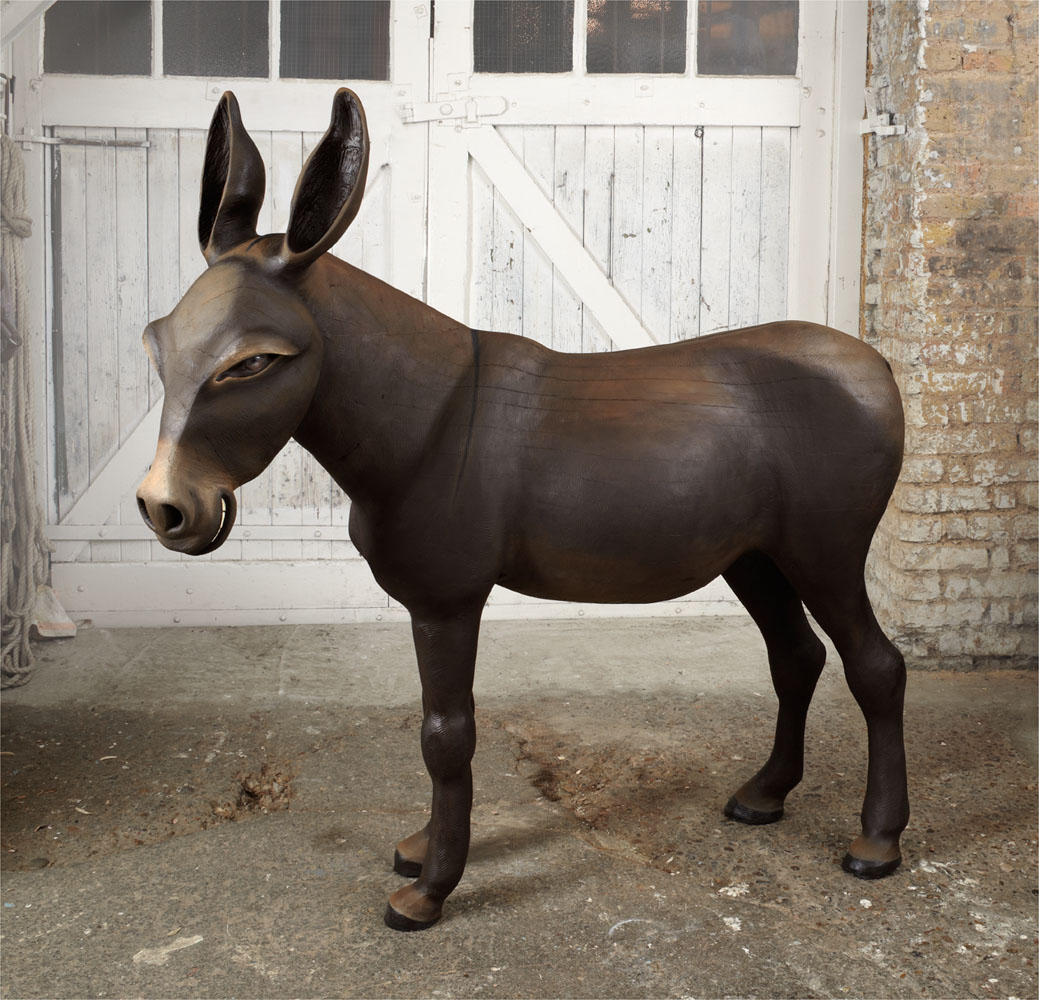 Blackheath Donkey 2011 Beech and oils 145 x 140 x 60 cm |
|||||||||||||||||||||||
|
8 April to 15 May 2011
Press : World of Interiors May 2011
"Watch this: / Ding-a-ling-a-ling / Ding-a-ling-a-ling-ding / Ding-a-ling-a-ling / Ding-a-ling-a-ling-ding / Do-da-do-da / I'm in heaven, I'm in heaven / I'm in heaven, when you smile… " - Van Morrison, Jackie Wilson Said There is a genre of art writing, most often to be found in short catalogue essays such as this, in which the subject appears to be almost anything other than the work in question. The style is perhaps a posh cousin of rock criticism, which Frank Zappa once described as ‘written by people who can't write, interviewing people who can't talk, for people who can't read.’ More charitably, we might say that the essential qualities of music are not easily put into words – that is why music is music, and why lyrics do not often translate if read outside of the context of their songs. The subject of this essay is the work of Annie Whiles, and I’ll try to remember that – it won’t be difficult, because I like it. There is a quality of clarity in her work that is refreshingly free of artistic ego, yet not devoid of personality. This quality is initially made manifest in her line drawings, which at first glance are in the mode of Patrick Caulfield, Michael Craig Martin, or Julian Opie, but soon reveal a quite different feeling, having less to do with photography and other tools of mass reproduction; their evident hand might point us back to Hergé, who in his Adventures of Tintin pioneered the ligne claire style. However, Whiles’ hindsight is set towards an earlier age, when things that cannot be mechanically recorded or reproduced were still held in common regard. Whiles sought direct artistic contact with this age when she travelled through Italy on a postgraduate scholarship, in search of saints (or at least, depictions of). Her favourite was Joseph of Cupertino, known in childhood as the Gaper, due to his habit of staring blankly into space, and latterly as patron saint of aviators and astronauts, thanks to his ability to levitate for extended periods. Italian art remains an inspiration for Whiles, albeit filtered through an Arts & Crafts sensibility, itself knowingly (but not cynically) mediated by subsequent art history. And this all makes aesthetic sense, given that the artist’s interest in Catholic iconography was preceded by her childhood experience of hearing Bible stories read in a stained-glass Anglican context. A familiar enough background, perhaps… except that, unlike many other English artists with nominally Christian upbringings, these stories left a deep and abiding impression on Whiles, and although she now professes religious agnosticism, when it comes to her art, she has, in her own words, “surrendered to the Bible as a reference point”. What does this mean? Whilst in conversation the question remains unresolved, in practice the process goes like this (I use Whiles’ terms in quotes): The work begins with the experience of an 'encounter' - for example, the occasion when Whiles saw a donkey smile at her on Blackheath Common. At some point this encounter becomes associated with a Biblical event - in the above example, with Balaam’s donkey, who speaks to his rider after seeing the angel of the Lord (Numbers 22.21-35). The encounter is then re-enacted, and this is then photographed, and an outline drawing made of the scene, large in scale, to allow for every detail to be recorded. This detailed drawing is then reduced in scale, before being translated into the material of the final work, at which point colour is introduced. By these means, Whiles aims to suspend the observed event: in art-historical terms, 'between Surrealism and Soviet realism', and in metaphysical terms, between the quotidian and the miraculous. It is notable that, during the re-enactment stage, Whiles avoids interpretation of the meaning of the encounter, by asking her actors to think of the inside of their bodies – this is reminiscent of Mamoulian’s directions to Garbo when filming the enigmatic ending of Queen Christina: ‘Think of nothing’. Except of course, this artist is not thinking of nothing - she is thinking of (or at least, in terms of) the Bible. There are many ways of reading the Bible (unless one takes that peculiarly Modern approach to scripture called literalism) as befits such a complex set of texts. Such complexity requires a hermeneutical key - for example, the New Testament offers a key to understanding the image of the Suffering Servant in Isaiah, as a prefiguring of Christ. A Jewish interpretation of this text would be different, of course, but still requires a key. In the 1st century BC, Rabbi Hillel developed his 7 rules of interpretation; the first being ‘Light & Heavy’: what applies in a less important case will also apply in a more important case. Jesus uses this approach in Matthew 6.26: ‘Look at the birds of the air; they neither sow nor reap nor gather into barns, and yet your heavenly Father feeds them. Are you not of more value than they?’ Hillel’s second rule allows an analogy to be made between two disparate texts on the basis of a common word or phrase - a strategy I myself have used to open up meaning in artworks; but of course, the real purpose of the rules is to enable scripture to operate as a hermeneutical key to life itself. And indeed, this would appear to be how Whiles is using the Bible - except that the scope of its meaning (and perhaps that of her “encounters”) is delimited by her stated resistance to either “too much or too little reality”. Such a well-tempered agnosticism conforms to what physical cosmology terms the Goldilocks Principle: eg, to support life, a planet must be ‘not too hot, not too cold, but just right’. But of course, that is not the end of the story; in the modern version of the eponymous tale, Goldilocks wakes up in her ‘just right’ bed to find herself surrounded by the three bears, from whom she runs away, never to return again. In the first printed version of 1831, however, the protagonist does not escape from her encounter, but is first burned, then drowned, and finally impaled on a church steeple. So what is the nature of the encounter in Whiles’ work? Martin Buber distinguished between two forms of existential relationship; the Ich-Du (I-Thou) and the Ich-Es (I-It). The I-It relation is between oneself and the idea of a thing, an object, and therefore not really a relationship at all, but a kind of monologue. The I-Thou relation is understood rather as a dialogue between two subjects; the language may be metaphorical, but the relationship is genuine, and as such, a true encounter. One example is Buber’s meeting with a tree: ‘I can look on it as a picture: stiff column in a shock of light, or splash of green shot with the delicate blue and silver of the background. I can perceive it as movement: flowing veins on clinging, pressing pith, suck of the roots, breathing of the leaves, ceaseless commerce with earth and air - and the obscure growth itself. I can classify it in a species and study it as a type in its structure and mode of life. I can subdue its actual presence and form so sternly that I recognize it only as an expression of law... I can dissipate it and perpetuate it in number... In all this the tree remains my object, occupies space and time, and has its nature and constitution. It can, however, also come about, if I have both will and grace, that in considering the tree I become bound up in relation to it. The tree is no longer It…’[1] Of course, encounters with trees (or donkeys) are not the only, nor the most important relations, but for Buber, 'every particular Thou is a glimpse through to the eternal Thou'.[2] I suspect that Whiles might assent to this, whilst observing that, in any relationship, the odd smile never goes amiss. © Mark Dean 2011
|
|||||||||||||||||||||||
|
For her second solo show in the gallery, Annie Whiles will be
bringing together woodcarving and embroidery.
Annie Whiles completed her MA in Fine Art at Goldsmiths College in
2000 where is now a lecturer in Art Practice. Selected exhibitions
include Pile, Chapter, Cardiff, 2011; The Peckham Experiment,
Camberwell Space, 2009; The Fabric of Myth, Compton Verney, 2008;
Sideshow, Grundy Art Gallery, Blackpool, 2007; Metropolis Rise, New
Art from London, Shanghai and Beijing, 2006.
She lives and works in London. |
|||||||||||||||||||||||
|
|||||||||||||||||||||||
| >home | |||||||||||||||||||||||
